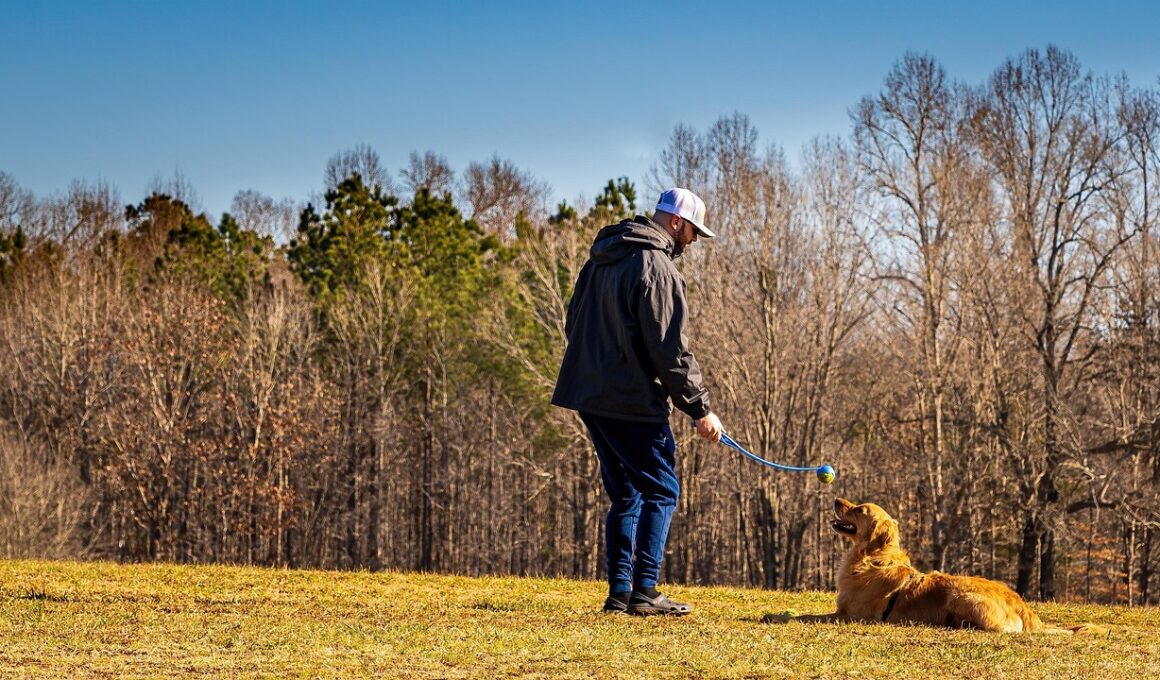Troubleshooting Common Problems in Sit Pretty Command Training
The “Sit Pretty” command is a visually impressive trick that many dog owners desire to teach their pets. However, common problems can arise during training. First, it’s crucial to ensure that your dog understands the basic “sit” command before attempting to teach the more complex “sit pretty”. If the dog struggles with the basic sit, integrating this new command can create confusion. If your dog seems hesitant, start by practicing sit with enthusiasm and rewards. Reassurance and positive reinforcement are essential components in motivating your dog. You can place a reward slightly higher than their head to encourage them to lift their front legs. Another method involves gently guiding their body into the correct position without applying any force. Remember that patience is a virtue; every dog learns at their unique pace. If they seem frustrated or disengaged, take a break and re-approach the training session later. Variations in training styles can also alter success rates. Be observant and flexible when adapting training strategies. Combining different techniques may lead to better outcomes.
Another issue often encountered is the dog’s physical ability to maintain balance during the command. Some breeds are more suited to perform tricks that require strength and agility. If your dog struggles with balance, consider adjusting your training approach to focus more on incremental improvements. One way to do this is to perform shorter training sessions focusing on posture and balance exercises. Gradually, increase the length of time your dog holds the “sit pretty” position. Also, strengthen their core muscles with exercises that improve stability. You can integrate fun activities like fetch or obstacle course training to build overall fitness. Additionally, maintain consistency in commands and cues; repeating the same word or gesture when instructing your dog aids in understanding. Make sure your dog feels secure and relaxed during training sessions. Harsh corrections can lead to anxiety, thereby hampering progress. Using a clicker or verbal marker can help communicate precise moments when your dog performs correctly. Celebrating small victories with treats and praise encourages a positive learning atmosphere that enhances their confidence.
Addressing Behavioral Challenges
Behavioral issues can also hinder the learning process for the “sit pretty” command. Dogs that are overly excited may fail to focus on the task at hand. To help with this, create a quiet, distraction-free environment for the training sessions. Begin with a calm atmosphere, allowing your dog to settle before starting. Practice calming exercises, such as deep breathing or lying down, to bring your dog’s energy levels down. When your dog is ready to focus, begin the training. If they become distracted, gently redirect their attention back to you. Moreover, recognizing signs of stress or frustration in your dog is vital. If they seem overwhelmed, reduce the duration of the sessions or switch to a different command. Positive reinforcement should always be your training method of choice. Additionally, consider breaking down the exercise into smaller steps. Focusing on mastering each increment can boost their confidence and minimize frustration. Techniques like shaping can be helpful in focusing your dog on their movements while giving them more control over achieving the desired posture.
Another common issue arises from inconsistency in training cues. If different family members use varied commands, it can produce confusion. Establish a consensus with everyone involved on specific words or gestures to maintain uniformity during the training process. This also promotes teamwork as everyone encourages the dog to perform the “sit pretty” command. Documenting your dog’s progress can be incredibly beneficial. A training diary can help you keep track of which methods work best. Furthermore, ensure that your dog understands that training sessions are enjoyable and fulfilling. Over time, diminish the frequency of treats, gradually replacing them with just verbal praise or petting as a reward. Once your dog has mastered the command, consider incorporating it into their daily routine. This can be during walks, meal times, or play sessions to reinforce their understanding and keep the command fresh in their mind. Involving the command in meaningful moments makes it more likely that they remember it. Each dog’s experience is unique, and tailoring sessions to their personalities will make a significant difference.
Encouraging Engagement and Curiosity
Encouraging curiosity and engagement in the training process can lead to success with the “sit pretty” command. Using various toys and distractions can make the training process more playful. Employing agility equipment can transform a training session into a fun game while simultaneously building physical fitness. Incorporate toys that challenge your dog’s intelligence, urging them to think and problem-solve. A curious dog that is eager to learn will be more responsive during commands. Additionally, changing your training environment can provide new incentives for your dog to engage. Different locations create novel experiences that can enhance their focus as they adapt to varying surroundings. Timing your training sessions around your dog’s natural energy peaks, such as after playtime, can yield better results. Experiment with different durations per session; some dogs may thrive in shorter, more frequent bursts of training while others may benefit from longer sessions. Always conclude with positive reinforcement and a reward, even if they didn’t entirely grasp the command. Ending on a positive note ensures they remain excited for future training opportunities and less likely to develop resistance to learning.
Finally, as an owner, it’s essential to remain stress-free during the training process. Dogs can sense your emotions; if you’re frustrated, they may react similarly. Take the time for self-reflection and ensure you approach each training session with a calm and confident demeanor. This will foster a secure environment for your dog, enabling them to feel safe and willing to perform the trick. If you encounter persistent issues, consider consulting a professional trainer who can offer tailored advice. Personalized instruction can provide you with feedback about specific situations that require adjustments. Online resources, such as videos and forums, can also assist in providing insights from other dog owners. Remember that not every dog will master the “sit pretty” command at the same pace. Patience, consistency, and positivity are key to navigating this journey successfully. Celebrate every small victory, regardless of how minor it seems. Encouraging progress and maintaining an atmosphere filled with joy are often the most effective methods to create lifelong learning experiences for your furry friend.
Wrapping Up the Training Process
In conclusion, troubleshooting common problems in Sit Pretty command training involves a combination of understanding, patience, and continuous adaptation. Every dog is unique, and what works for one may not work for another, requiring owners to be observant and flexible. Regularly reviewing your training techniques and approaches can lead to significant improvements over time. It’s important to remember that while the journey may present challenges, the bond between you and your pet grows stronger. Celebrate those moments of success, however small, and use them as motivation for both you and your dog. Using shared training experiences can pave the way for a strong bond, helping overcome any challenges. Incorporate regular check-ins to evaluate your dog’s progress. Monitor sentences and learn from your dog’s responses; their behaviors can provide insights into what is effective during training. By engaging in this reflective practice, you can become a better trainer and deepen your relationship with your dog. In the end, achieving proficiency in sit pretty will not only delight you but will also give your dog a sense of accomplishment that reflects well on your training.
Through thoughtful dedication, you both will enjoy the fruits of your labor, transforming the Sit Pretty command from a challenging task into a fun and rewarding experience. Infusing joy into each session can create lasting memories, turning training into quality time together. Engaging in this unique training experience will not only enhance your dog’s abilities but also solidify your relationship. As you proudly showcase your dog’s new skills to friends and family, remember that the bond you’ve forged through these shared experiences is invaluable. Always look for opportunities to enrich your dog’s daily life with new challenges that encourage growth. Whether it’s refining existing commands or introducing new challenges, your involvement makes a difference in how your dog perceives training. As you navigate the hurdles in training, rely on a supportive community of fellow dog owners who will share similar experiences. Ultimately, be persistent and celebrate the journey alongside your furry friend, recognizing that the destination is worthwhile when you share such enjoyable moments together.


